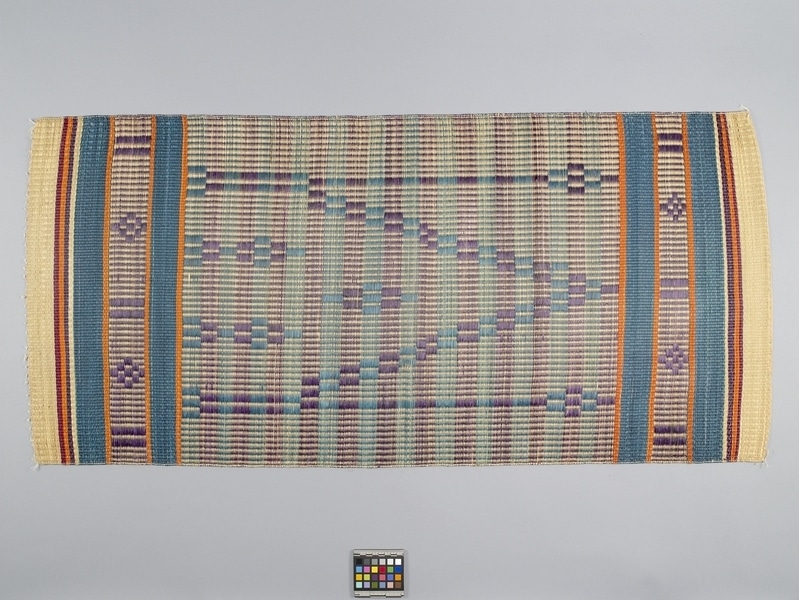Prayer Mat Item Number: Eg31 from the MOA: University of British Columbia


Description
Woven grass mat with a fine weave. There is a centre cone shape between two lines against a yellow, green and purple background. The conical motif suggests an architectural figure flanked by towers. There are borders on each end with green, orange and dark red bands.
History Of Use
The antiquity of woven mats in India is supported by archaeological evidence and references in the ancient texts. Mats are among the most important items in household furnishings in every strata of Indian society. They are essential to most domestic purposes and are used in eating, sleeping, sitting and entertaining activities. The Pattamadai mats are woven of wild korai grass which is collected twice a year. It is slit into strips, dyed and woven into mats on a simple frame flat loom, utilizing a warp of string. The mat is finished with a polished stone. Specialist groups of weavers are known in Tamil Nadu both among Hindu and Muslim peoples. Many mats are now marketed through co-operatives.
Iconographic Meaning
decorative motif appears to represent a mosque with two minarets.
Cultural Context
religious
Item History
- Made in Tirunelveli, Tamil Nadu, India before 1976
- Collected during 1976
- Owned by Stephen Inglis before December 2, 1977
- Received from Museum of Anthropology Donations Fund (Funding source) and Stephen Inglis (Seller) on December 2, 1977
What
Who
- Culture
- Tamil
- Previous Owner
- Stephen Inglis
- Received from
- Museum of Anthropology Donations Fund (Funding source) and Stephen Inglis (Seller)
Where
- Holding Institution
- MOA: University of British Columbia
- Made in
- Tirunelveli, Tamil Nadu, India
When
- Creation Date
- before 1976
- Collection Date
- during 1976
- Ownership Date
- before December 2, 1977
- Acquisition Date
- on December 2, 1977
Other
- Item Classes
- basketry
- Condition
- good
- Accession Number
- 0411/0071